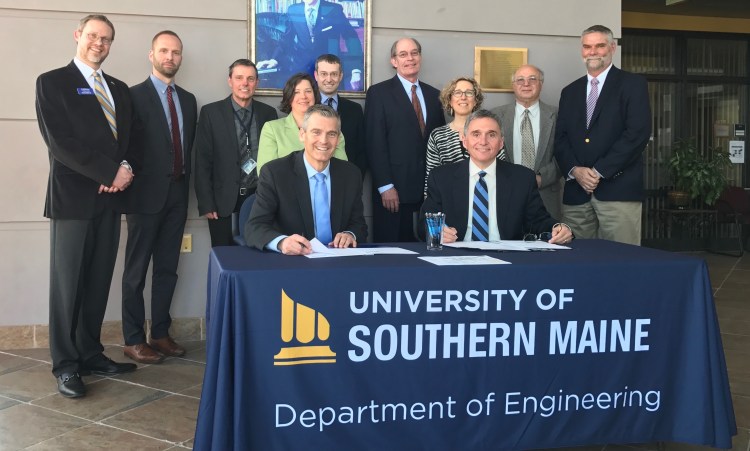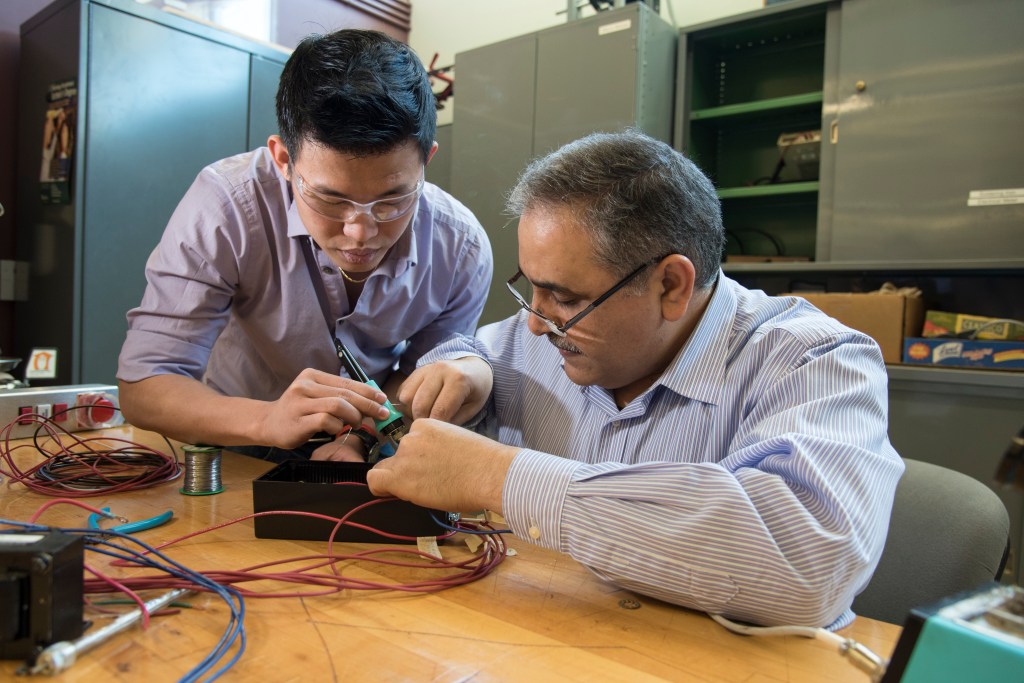 If you have an engineering degree, or are working towards one, your employment prospects are looking very favorable.
If you have an engineering degree, or are working towards one, your employment prospects are looking very favorable.
“Nationally, regionally, and in our state, there is a great demand for new engineers,” said Carlos Lück, professor of electrical engineering at the University of Southern Maine.
“As the United States’ economy grows, and manufacturing returns to the U.S., and manufacturing in Maine is growing, the need for engineers is being recognized. The many engineers in Maine who are retiring need to be replaced.
“So nowadays, having an engineering degree is like a sellers’ market,” Lück continued. “There may be an array of job offers for you.”
Adam Tambone, chair of the Engineering and Electrical Technologies department at Southern Maine Community College, agreed with Lück’s assessment: “There is a definite shortage of engineers in Maine and in the nation.”
To help address that need, Lück, Tambone, and their departments and institutions, have teamed up to create the “2 + 2” program. It is designed to boost the number of qualified engineers entering the workforce in Maine and beyond.
In 2 + 2, associate-degree graduates of the engineering program at SMCC in South Portland bring their two years of credits to USM, and continue their engineering studies there, on USM’s Gorham campus, to earn a baccalaureate degree after another two years.
Several years in the planning, the 2 + 2 agreement was signed in 2016, and launched this academic year, 2017-18. The first cohort of SMCC students is getting ready to transfer to USM this fall.
Students benefit in several ways, including convenience, since the campuses are effectively “co-located,” Tambone said.
Those who would like to pursue engineering but do not have the “calculus-ready” qualification, which is necessary to make timely progress in USM’s programs, can achieve that standard at SMCC. “Prospective engineering students can be accepted unconditionally,” Tambone said.
Also, students pay a lower tuition rate during their time at SMCC, “and nearly all who apply receive grants,” Tambone said. A further financial advantage: The program is designed so that students graduate in four years, rather than in the five years (a 2 + 3 format, so to speak) that is “more common across the country,” Lück said.
Additionally, the SMCC program was made more rigorous. “The two years here are indeed the first two years of an engineering degree that a student would earn at USM, or the University of Maine, or at any school in the world,” Tambone said. “Our three concentrations – electrical, computer, and mechanical engineering – mirror what is offered at the University of Southern Maine.”
The schools designed the program for a smooth transition, with an academic calendar that coordinates the schools’ courses and “enhances the mobility of students in both directions between the institutions,” said Lück.
The importance of the schools’ favorable location cannot be understated.
“We are in the very center of the Maine economy,” Lück said. “The number of companies, and the job opportunities they represent, creates a huge advantage for our students here in southern Maine.
“They can seek internships and work year-round while they are going to school, and reduce or avoid debt,” he continued.
“As one recruiter for a local engineering company told me, an internship can be roughly defined as a three-month job interview. The company gets to know you, and in many cases, extends a job offer upon your graduating.”
That’s one example of the kind of outcome the 2 + 2 program is designed to realize. As Tambone said, “We are working to introduce a whole new population of Mainers to the engineering professions in Maine.”
Send questions/comments to the editors.




Comments are no longer available on this story